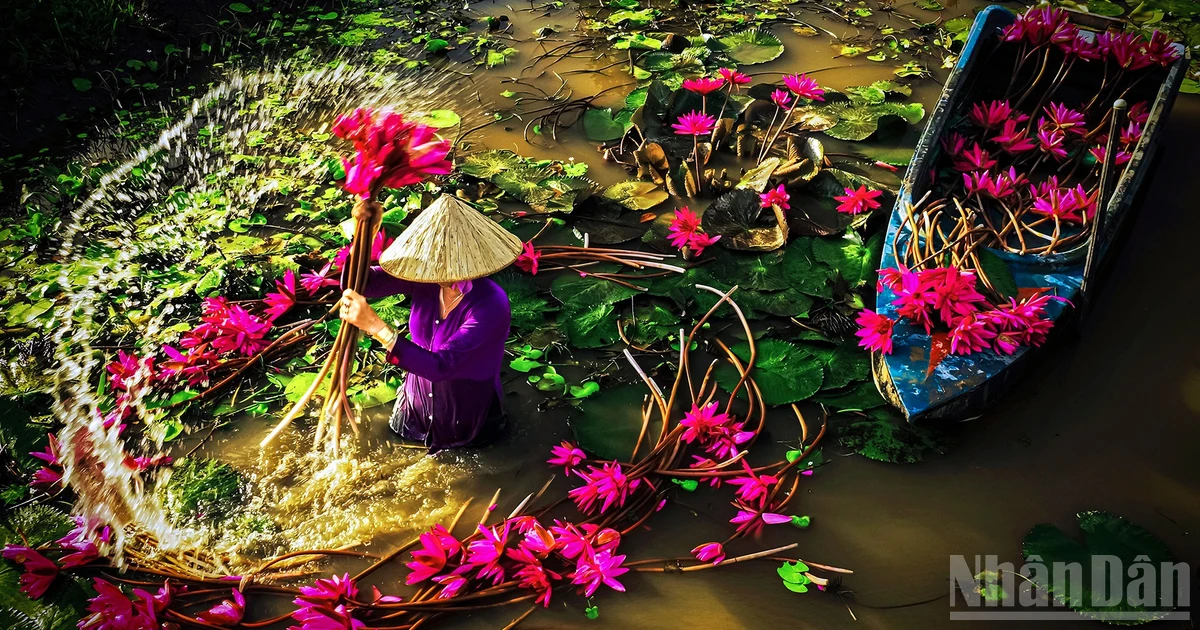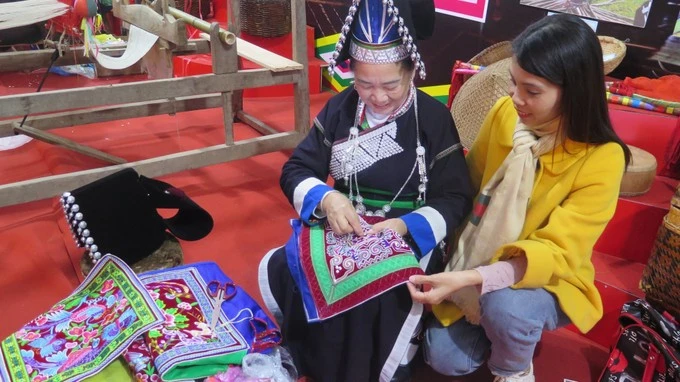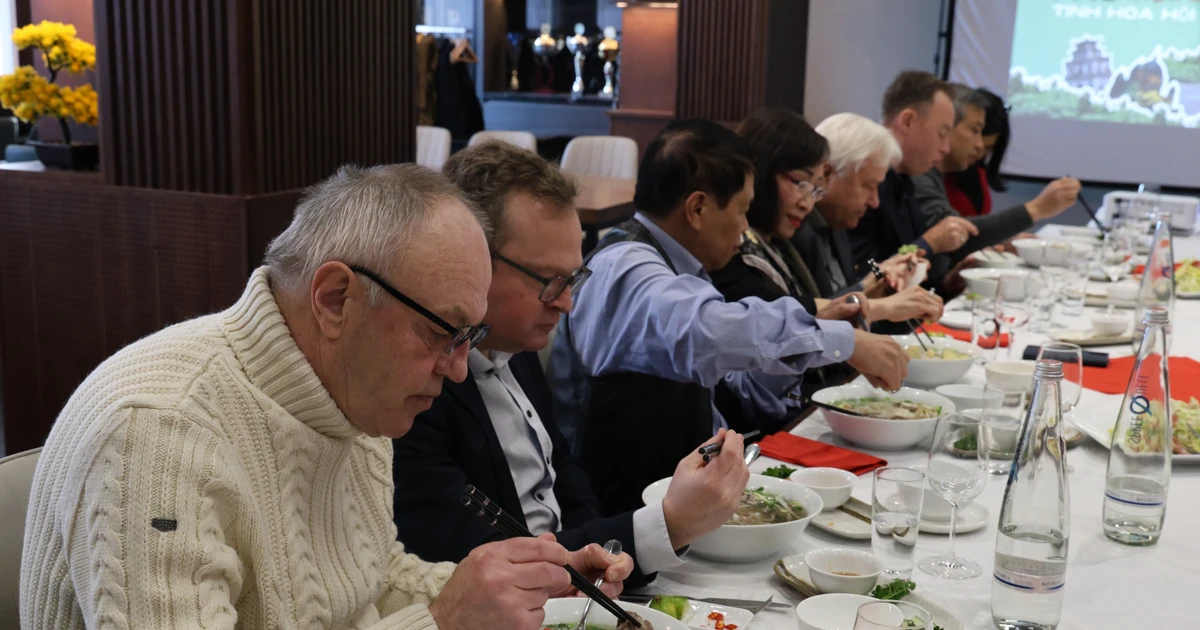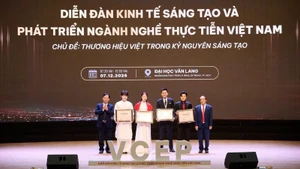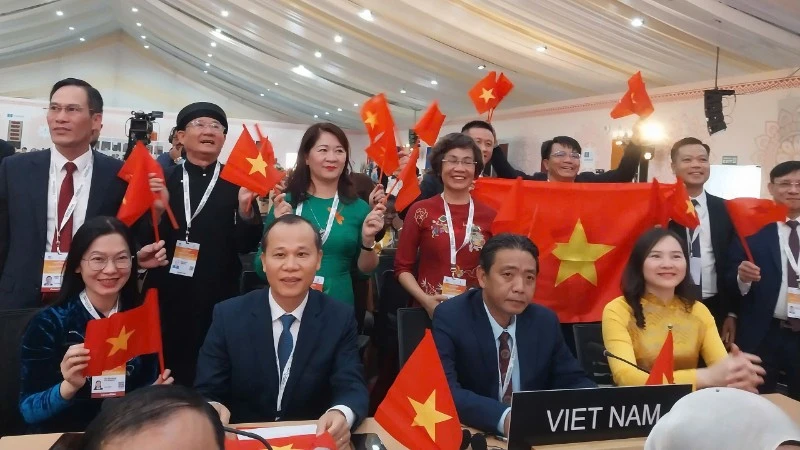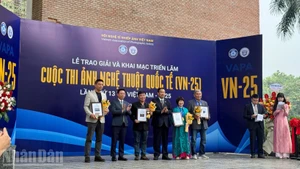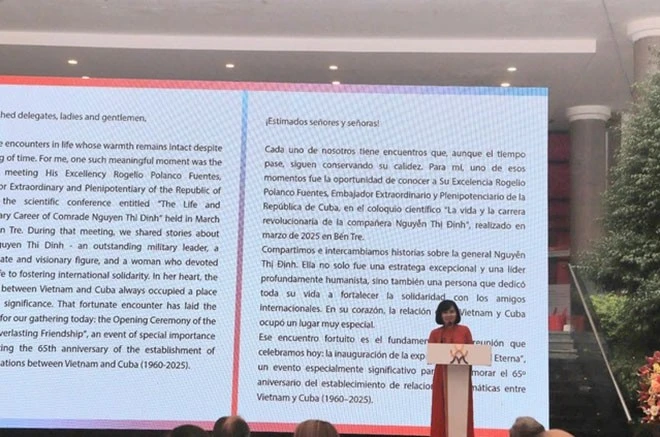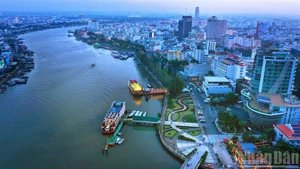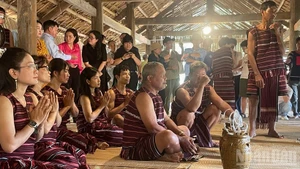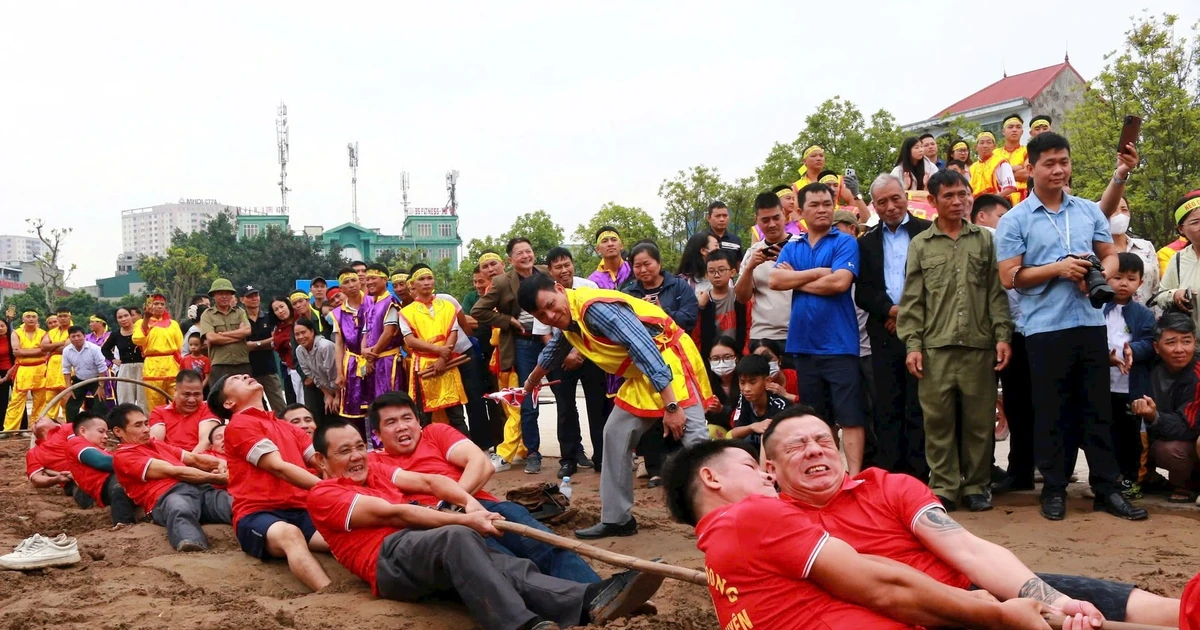Vibrant domestic art market
D&C Gallery & Luxury Décor, located on Le Thai To Street, Hoan Kiem District, Hanoi, was established in 2017. It is a well-known spot for art lovers. The gallery showcases a variety of multi-material artworks created in diverse styles and schools by Vietnamese artists.
The gallery's founder, collector Tran Cuong, mentioned the trend of Vietnamese people collecting artwork accounts for about 80% of the customers, whereas, in the past, foreigners made up 60-70%. During the transition from a subsidised economy to a market economy in Vietnam, the struggle for basic needs left little room for the desire to collect artworks. Most works created by Indochinese and contemporary painters or during wartime were sold to foreign buyers. Nowadays, domestic art lovers are becoming younger, the global culture is bringing art into everyday life, and Vietnamese people are increasingly interested in collecting paintings and artworks. Focusing on pure Vietnamese culture and arts, Tran Cuong has created a tea-tasting space in his gallery, where visitors can experience and enjoy Vietnamese tea products while engaging in cultural and artistic exchanges.
Art curator Ace Le shares similar observations about the current state of the art market. He noted that in the 1990s, international collectors made up 90% of the market, with only about 10% of domestic collectors. Today, this ratio has reversed, with 70% as local collectors. The reason for this change is Vietnam's strong economic growth, which has balanced supply and demand, and has given Vietnamese artists the advantage of connecting with domestic customers and gaining opportunities to reach regional and global markets. The art ecosystem, including curators, galleries, art spaces, and media, has accordingly shifted to serve domestic customers. Many artists are now creating works imbued with Asian essence and localising themes to cater to the tastes of domestic art consumers.
The information above highlights the shift and potential of the domestic art market in Vietnam. Art is becoming more widespread and accessible to the public. The community of Vietnamese people who love paintings and fine arts is rapidly growing, creating opportunities for Vietnamese artists to confidently participate in the art market. The demand for home decoration, the ability to appreciate fine arts, and improved economic conditions have all risen. Instead of buying mass-produced or imported artworks from China that lack uniqueness and aesthetic value, art lovers are actively meeting with artists, discussing their needs, and commissioning works that fit their display spaces. Art centres and exhibitions in the capital city attract the public with many programmes like art tours, auctions, and interactions between artists, curators, and audiences.
Painter Dang Cao Cuong, who runs a lacquer decoration and engraved painting workshop in Ha Thai Village (Duyen Thai Commune, Thuong Tin District, Hanoi), has completely changed his production and business strategy, no longer relying on export orders as he did before the COVID-19 pandemic. During the outbreak, his family lost its export revenue. Reevaluating the consumption needs of domestic customers, he realised that Vietnamese people are willing to spend if they find something they like. As a result, Dang Cao Cuong proactively designed and created models and products for the domestic market. The lacquered furniture and animal-shaped figurines produced by his workshop, have been appreciated by Vietnamese customers. With the habit of shopping at the end of the year and the trend of buying animal-themed items (based on the zodiac) for display, decoration, and gifting, he changes the theme of his creations annually. Transitioning from wall paintings, Dang Cao Cuong has applied traditional lacquer techniques to cabinet doors and tabletops, and refurbished old items to suit modern interior spaces. Recognising that Vietnamese customers have been paying attention to special handcrafted and artistic products, especially traditional lacquer paintings, he has introduced culturally infused products that combine traditional lacquer materials with a modern aesthetic, making them both appealing and familiar. Currently, his products are mainly supplied to craft shops on several streets in Hanoi. Additionally, his lacquer-making experience programme in Ha Thai Village has attracted many students and tourists.
"Vietnamese people travelling around Vietnam" - more than just a slogan
In just a few years, adventure tours such as cave exploration, scuba diving, paragliding, and waterfall rappelling, which were once predominantly enjoyed by international tourists, have become increasingly popular among Vietnamese travellers.
Umove Adventure, based in Hanoi, is an early participant in nature exploration and extreme sports tourism. They are now capitalising on water sports tours, such as stand-up paddleboarding (SUP) on Ba Be Lake (Bac Kan Province), the Nho Que River (Ha Giang Province), and exploring Pu Mat National Park (Nghe An Province). Umove Adventure offers a diverse range of tours, from mountain climbing, SUP, kayaking, cave exploration, and cycling, to outdoor tours in national parks, catering to various groups, from young travellers to families and summer camps for children. Tran Trung Kien, CEO of Umove Adventure, noted that a prominent trend in domestic tourism is recreational activities and experiences in nature reserves or eco-tourism sites near major cities. Vietnamese tourists accounted for up to 85% of this summer’s bookings. Vietnamese tourists who choose these activities enjoy exploration and are willing to pay more for high-quality and unique experiences. However, when designing suitable tours, it is important to consider certain characteristics, such as the preference for shorter trips, lower difficulty levels, and a love for photography and filming. In addition to Umove, most companies specialising in outdoor and sports tourism, such as Oxalis (Quang Binh), To Ong (Ho Chi Minh City), and Thai Nguyen Adventure (Thai Nguyen), are also investing in equipment, props, and training guides, with the skills needed to help customers capture beautiful memories of their trips.
Despite the seasonal factor (with summer being the peak), Kien believes that the percentage of domestic tourists interested in outdoor and extreme sports tourism will continue to rise. With social media trends among the younger community, the trend of cultural and historical exploration is also noteworthy. According to a recent survey by the online travel platform Klook, 62% of Vietnamese tourists are willing to spend more visiting museums, historical sites, and local cultural landmarks. This is partly thanks to initiatives and efforts by many heritage sites and museums to improve the tourist experience, digitalise everything from ticketing to exhibitions, and enhance communications, thereby strongly appealing to the domestic public. Examples in Hanoi include the Temple of Literature - Quoc Tu Giam, Hoa Lo Prison, Vietnam Fine Arts Museum, and the National Museum of History.
Tapping into the domestic tourism market is seen as the "key" to the recovery of Vietnam's tourism industry. The domestic customer base continues to play a crucial role in driving the tourism sector's growth. According to data released on July 8, by the Vietnam National Administration of Tourism, in the first six months of this year, Vietnam's tourism industry served 66.5 million domestic tourists, with 14 million Vietnamese travelling within the country in June alone. Thanks to innovative and diverse products, attractive stimulus packages, and effective promotion strategies, the number of domestic tourists has been increasing monthly. Since April, the Ministry of Culture, Sports, and Tourism has launched the campaign “Vietnamese People Traveling in Vietnam – Vietnam I Love It” which has been actively supported by many localities nationwide. The Hanoi Municipal Department of Tourism initiated the programme “Hanoians and Tourists Experience Services at 4-5 Star Hotels”, with preferential rates and flexible policies to attract residents of the capital and tourists during the 2024 summer and autumn and the 70th anniversary of the Capital's Liberation Day (October 10). Da Nang, the central coastal city that consistently leads in domestic tourist numbers, also organised a series of vibrant summer festivals and launched a stimulus programme from early July until the end of September, targeting visitors from Hanoi and Ho Chi Minh City.
As the economy gradually recovers post-pandemic and cultural industries are emphasised more than ever, the domestic market is proving to be a stable and essential foundation for Vietnam's tourism and fine arts sectors. It holds opportunities and potential for exploration, making the development of the domestic art and tourism market both a trend and a catalyst for designing and packaging attractive products that bear the Vietnamese brand identity to serve domestic consumers.

